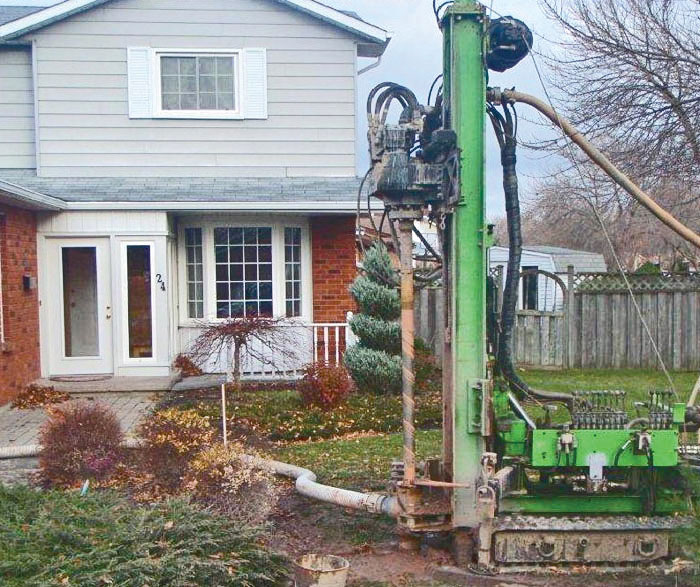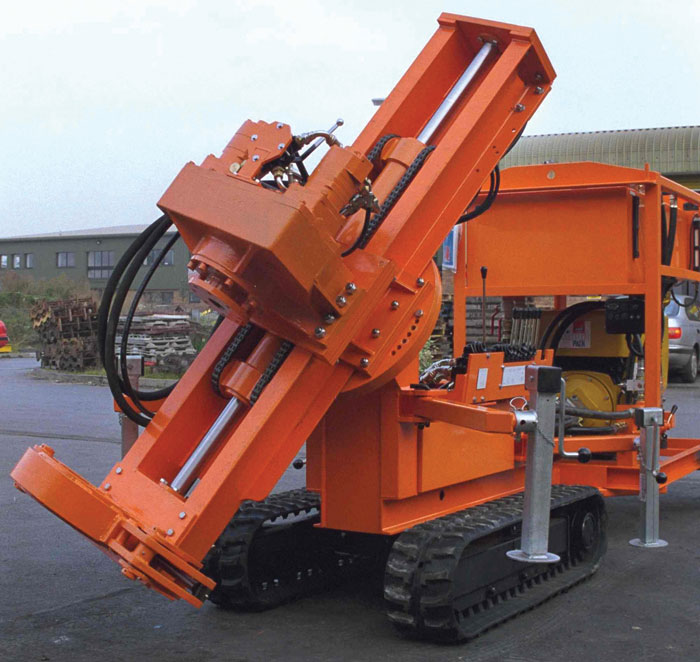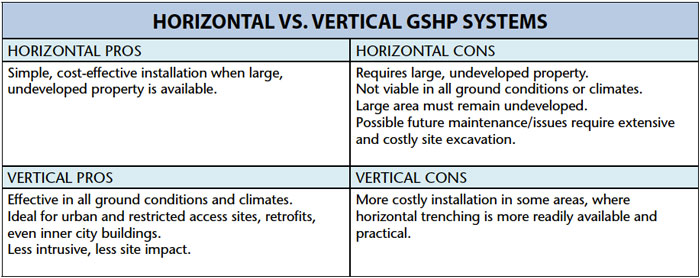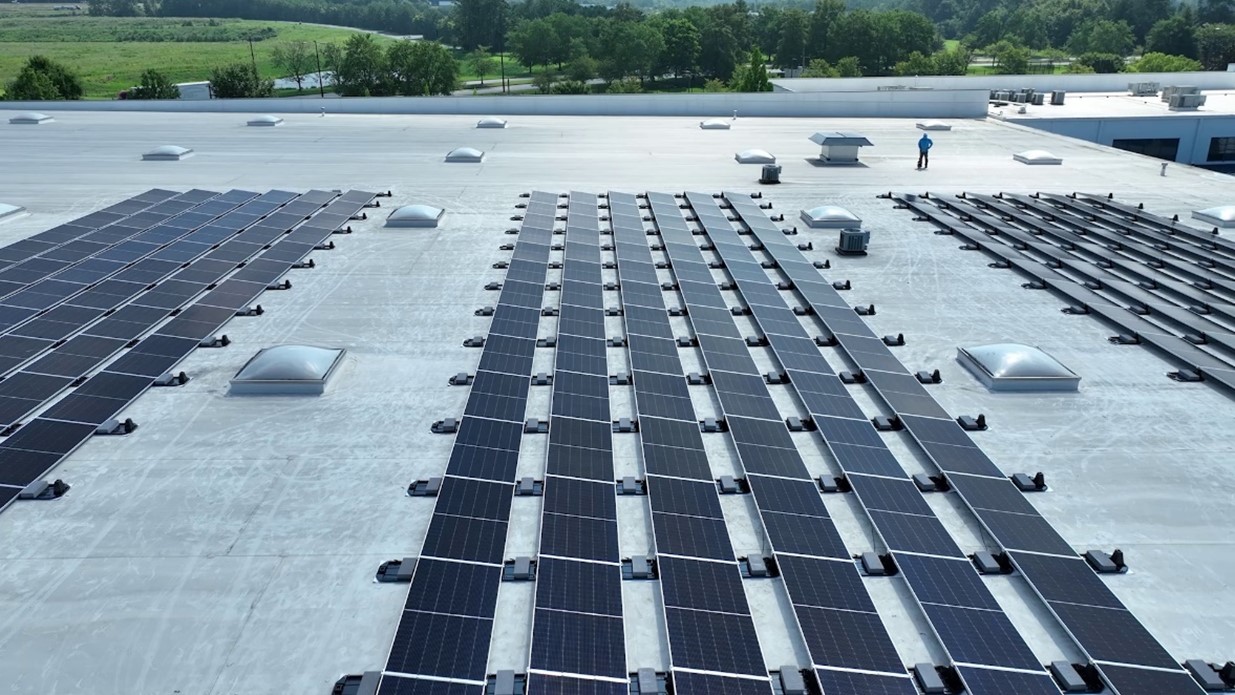Ground Loop Systems Explored
 Geothermal or ground source heat pump (GSHP) systems don’t create heat through combustion like conventional furnaces. They exchange heat with the relatively constant temperature of the earth. In the summer, rather than exchanging heat with the warm outside air like a conventional air conditioner, the GSHP system exchanges heat with the cooler, more constant temperature of the ground. That’s why geothermal heat pumps are so efficient and also why they are commonly called GeoExchange systems. A GSHP system is comprised of three parts:
Geothermal or ground source heat pump (GSHP) systems don’t create heat through combustion like conventional furnaces. They exchange heat with the relatively constant temperature of the earth. In the summer, rather than exchanging heat with the warm outside air like a conventional air conditioner, the GSHP system exchanges heat with the cooler, more constant temperature of the ground. That’s why geothermal heat pumps are so efficient and also why they are commonly called GeoExchange systems. A GSHP system is comprised of three parts:
1) An underground or underwater loop of high-density polyethylene (HDPE) pipe that gathers heat (in heating mode) and displaces heat (in cooling mode).
2) An electric heat pump that circulates liquid through the loop system and retrieves the usable heat. A desuperheater can also be built in to extract additional heat to produce domestic hot water.
3) An indoor system of conventional ductwork that distributes the exchanged warmed or cooled air.
There are also three main designs of closed loop systems. The term closed loop refers to the sealed and pressurized system that is made up of the heat pump and buried HDPE pipes. These pipes can be buried horizontally or vertically or submerged in a body of water.

Another approach is horizontal boring also called horizontal directional drilling (HDD). This technique is often used to install natural gas lines or utility cables and results in less disruption to the property. For a large, undeveloped property, a trenched horizontal system may be simpler to install than a horizontally or vertical bored design, therefore lowering the installation cost. However, a much larger surface area is necessary and hard rock near the surface, trees or other challenges related to excavating and HDD may eliminate the option of a horizontal system design. Also, since the horizontal loops are relatively shallow, they are often not suitable for areas with extreme climates. Therefore, it is not a feasible option in all circumstances.
A vertical loop field consists of drilled boreholes, generally 4 to 6 in. in diameter, anywhere from 100 to 600 ft deep. The borehole depth and number of holes is determined mainly by the heating and cooling load of the building, but also by the ground material’s conductivity. HDPE pipe is inserted into the borehole which is then grouted. The grout protects the pipe from expansion and contraction of the ground and should be thermally enhanced to absorb or dispense as much heat as possible, making the system even more efficient. With proper drilling techniques, vertical boreholes are possible in all ground conditions. Compact, track mounted drilling rigs limit intrusion with less site impact making this method perfect for retrofit applications, restricted access and urban sites. Low headroom drilling rigs, such as the RigKits K40 short mast, can even operate under buildings, in basements and parking garages, supplying geothermal systems to apartments, condos, high-rise offices and hotels.
The third closed loop system design involves utilizing a nearby pond or lake. Coiled HDPE pipe is submerged in the fairly large body of water, at least 8 ft deep to prevent freezing in colder climates. The body of water must be fairly close to the building and is tied in by a buried supply line. This system is relatively inexpensive to install, however, it may not be as efficient in colder regions and is only a viable option in limited scenarios. The extremely high efficiency of geothermal heating and cooling systems offers desirable annual savings and payback to home and building owners. Combined with high profitability, these systems are equally attractive for compact equipment operators and drilling contractors to install. Plus they’re environmentally friendly, and it doesn’t get much better than that.
Brandon Wronski is an equipment specialist with RigKits LLC, based in Charlotte, N.C.





